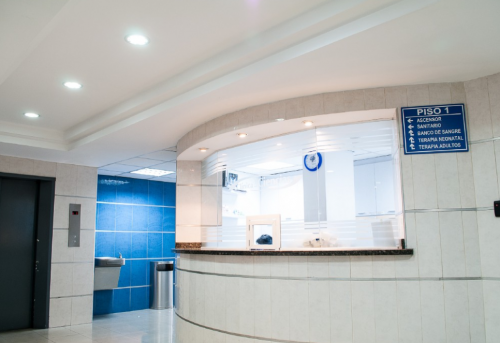Keep Your Uterus and Stop Heavy Periods With an Endometrial Ablation
Uterine-sparing minimally invasive alternatives to hysterectomy.
Heavy periods (Menorrhagia) are a common gynecological problem affecting one in twenty women. Menorrhagia is frequently treated by hysterectomy, but many women benefit from uterine-sparing minimally invasive approaches.
Women deserve to know all of the options before agreeing to a hysterectomy.
Endometrial ablation is a minimally invasive treatment designed to minimize, or in some cases, eliminate menstrual bleeding. This alternative treatment option is popular with premenopausal women suffering from menorrhagia, for whom childbearing is complete.
How does an endometrial ablation work?
Endometrial ablation is a short, outpatient surgical procedure to treat abnormal uterine bleeding without the need for incisions. The procedure destroys the endometrial lining, the tissue responsible for menstrual bleeding. This low-risk option has a 95% patient satisfaction rate and requires minimal patient downtime.
After the procedure, patients may never bleed again. If they do, their bleeding is generally reduced. Approximately half of the women no longer have bleeding after the procedure. Of the 50% that do continue to have a cycle, most have little bleeding and are satisfied with their results. The overall satisfaction rate is approximately 95%.
As not all patients experience a satisfactory reduction in bleeding, all treatment options should be discussed with your doctor.
Who is a candidate for an endometrial ablation?

Photo by Eye for Ebony on Unsplash
Candidates for endometrial ablation include those who:
- Have periods lasting longer than seven days
- Use more than 3 pads or tampons per day
- Pass clots during menstrual cycles
- Period bleeding affects your work, social, athletic, or sexual activities
- Medical management has failed to control heavy bleeding
- Anemia due to heavy periods
- Wish to reduce menstrual bleeding without major surgery
Where is the procedure performed?
Endometrial ablation can be performed in a variety of settings. Many Obgyns perform this procedure in the office setting using oral sedation medication and a paracervical anesthetic. A paracervical block is an anesthetic technique done by a gynecologist to numb the uterus. Medication is injected into the cervical tissue to reduce pain during surgery.
Other gynecologic surgeons perform this outpatient procedure in an ambulatory surgery center or a hospital setting.
The office, surgery center, or hospital are all reasonable and appropriate surgical settings.
How does the procedure work?
Multiple medical device technologies can be used to perform endometrial ablations. Gynecologic surgeons typically have a personal preference or comfort level with one or more of the various options. Each medical device works by destroying the endometrial lining.
The most common technologies include Novasure, Genesys HTA, and Minerva. While each system functions differently, each subscribes to the same basic concept. Heat is employed to destroy the endometrial lining of the uterus to eliminate or reduce bleeding to normal levels.
Her Option is the exception to the rule. This device uses a freezing technology called cryoablation. Cryoablation utilizes cold temperature to affect the uterine lining.
First, your cervix will be slightly dilated to allow the introduction of the device into the uterus. Once the gynecologist confirms proper placement, the ablation is performed. Novasure and Minera last 60–90 seconds. Genesys HTA is a ten-minute procedure. Her Option takes up to 20 minutes.
When the treatment is complete, the devices are safely removed. The uterine lining has been treated and will slough off similar to a menstrual period over the next few weeks.
Will this procedure require an anesthetic?
Anesthesia is required for endometrial ablation. The type of anesthesia will vary depending on the surgical setting, the surgeon’s experience, and the endometrial ablation technology. Oral sedation, paracervical block, IV sedation, and general anesthesia are all potential anesthetic options.
If general anesthesia is required, instructions will be given to avoid any food or liquid intake starting the night before surgery.
What’s the procedure when I check-in?
In most settings, patients will receive a preoperative phone call by a nurse or medical assistant one to two days before surgery. If any blood work or preoperative testing is required, it will be scheduled and confirmed.
Most surgeries will involve a preoperative visit with your surgeon. The risks and benefits of the procedure will be discussed in detail and questions regarding your procedure are discussed. The surgical consent form is reviewed, signed, or updated with any changes.
After arrival for the procedure, the staff will guide you to the preoperative holding area to change into a surgical gown and store your valuables. If an IV is required, it will be placed at this time. You will meet the nursing team who will provide care during your stay. The anesthesia team will come to interview you and answer questions. Typically your surgeon will also come and review any last-minute questions.

Photo by Martha Dominguez de Gouveia on Unsplash
What happens in the operating room?
After the preoperative evaluation, the team will guide you to the operating room. You will move from the mobile bed to the operating table. Once you are positioned comfortably and safely, the anesthesiologist will give you medication through your IV.
The OR nursing team will cover your body with sterile drapes after cleaning the surgical site for sterility. The team then performs a “surgical time-out.” A surgical safety checklist is read out loud requiring all surgical team members to be present and attentive.
The surgeon then performs the surgical procedure.
Once the procedure is complete. A post-procedure review is done together as a surgical team. All instruments and equipment are counted and verified. Once complete, the anesthesiologist will begin to assist the patient in waking up for transfer to the recovery room.
How long will I be in the operating room?
Once the patient enters the operating room a series of safety steps must occur. Leep procedures can take between 2–20 minutes of operative time depending on the technology is used.
When can I go home?
Postoperative recovery time will vary from person to person. Each patient must meet certain discharge criteria. The patient’s vital signs must be stable. The patient must be alert, oriented, and able to walk with assistance. Postoperative nausea, vomiting, and pain must be controlled as well as confirmation of no postoperative bleeding.
The nursing team will go over discharge instructions, and the plan for postoperative pain management options will be confirmed.
Endometrial ablation procedures require a minimal amount of postoperative recovery. Patients are often discharged as early as 30–60 minutes after the procedure.
What is the usual recovery time
After the procedure, you may experience some cramping that should be controlled with minimal pain medication. Most patients will have a pink or yellow watery discharge for a few weeks after your treatment. Many patients may return to work the following day.
What aftercare is required?
Most women should be able to return to normal daily activities the next day. You should speak with your physician about the resumption of sexual activity. You should not use tampons for up to seven days after the procedure to reduce the potential risk of infection.
The short term effects on menstrual bleeding vary. Some may see immediate improvement. Others will continue to see menstrual cycle lightening for a few months. Optimal improvement typically occurs in the first six months.

Photo by Zach Vessels on Unsplash
Danger Signals to look out for after the procedure
After Endometrial ablation, if you experience two days of heavy bleeding, abdominal or pelvic pain, a fever, or pain that increases over time beyond 24 hours, call your physician. After any surgery contact your physician if you meet any of the following criteria:
- Fever higher than 101
- Pain not controlled with prescribed medication
- Nausea and vomiting
- Calf or leg pain
- Shortness of breath
- Heavy vaginal bleeding
- Foul-smelling vaginal discharge
- Abdominal pain not controlled by pain medication
- Inability to pass gas
What preparations should I make for aftercare at home?
Endometrial ablation requires very little postoperative care. Vaginal discharge and spotting are expected. One should have a supply of sanitary pads available. Sexual activity should be avoided until cleared by your doctor. One may resume a normal diet and exercise the day after the procedure.
What information should I provide to my doctors and nurses?
It is very important to provide your doctor with an updated list of all medications, vitamins, and dietary supplements prior to surgery. All medication and food allergies should be reviewed. Share any lab work, radiologic procedures, or other medical tests done by other healthcare providers with your surgeon prior to your procedure.
Thank you to BeingWell for publishing this article on Medium. Article originally published on Medika Life.
Blog Author: Dr. Jeff Livingston






